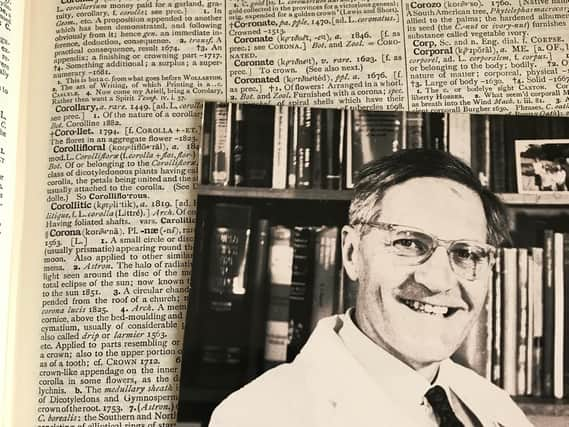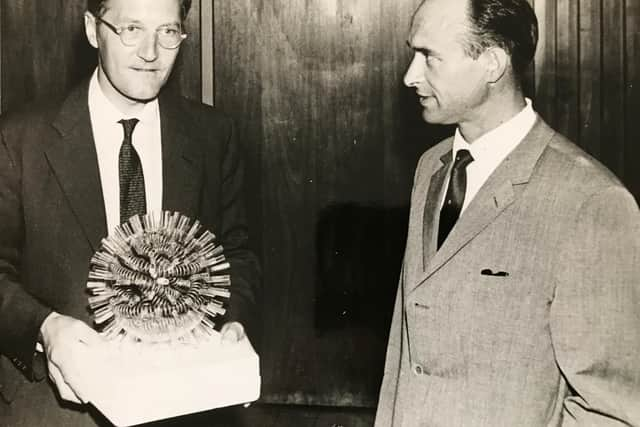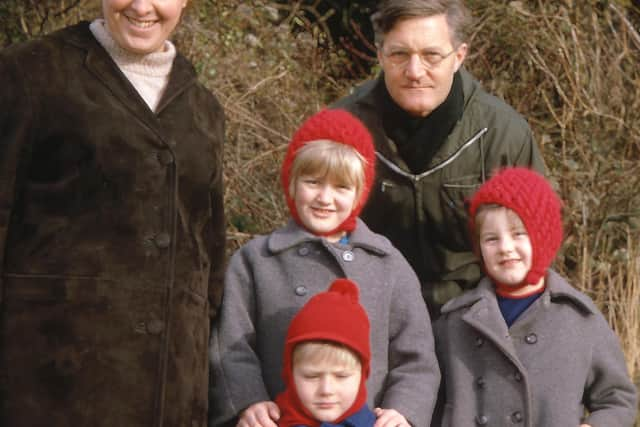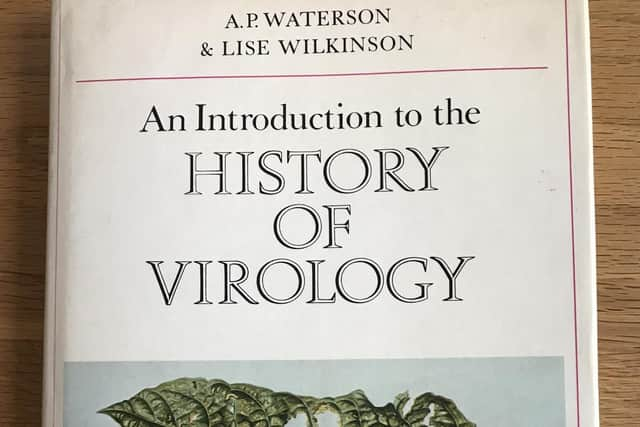The Yorkshireman who named the coronavirus and aided its discovery


As Prime Minister Boris Johnson lay dangerously ill with Covid-19 in St Thomas’ Hospital in London, he was unaware that decades earlier, in that very same hospital, a Yorkshireman had helped facilitate the discovery of the virus type that caused the devastating world-wide pandemic.
It was in Professor Tony Waterson’s Microbiology Department at St Thomas’ that the coronavirus was first identified in 1964 by June Almeida, a brilliant, Scottish-born scientist he had headhunted from the Ontario Cancer Institute in Canada.
Advertisement
Hide AdAdvertisement
Hide AdHornsea born Prof. Waterson and Dr David Tyrrell, then head of the Common Cold Research Unit, then took on the task of naming the virus with help from a dictionary. This initial discovery was the crucial first building block in helping modern day scientists battle this latest deadly strain.


The story began when the Common Cold Research Unit in Salisbury identified an unusual virus strain in nostril swabs taken from schoolboys. They found that it caused cold-like symptoms but had properties that were quite distinct from the familiar cold viruses and they were keen to find out more.
Dr David Tyrrell later wrote: “I decided to seek help from Tony Waterson, the new professor of virology at St Thomas’ Hospital. “He had just recruited an electron microscopist, June Almeida, who was seemingly extending the range of the electron microscope to new limits. She claimed that she would be able to find virus particles with her new, improved techniques.
“We were not too hopeful but felt it was worth a try. The results exceeded all our hopes and her pictures revealed their structure beautifully. June was confident that these three viruses were something quite new.”
Advertisement
Hide AdAdvertisement
Hide AdThe daughter of a Scottish bus driver who grew up in a Glasgow tenement and left school at 16 was right. Starting as a lab technician, she went on to study virology and became a leading light in virus imaging, identification, and diagnosis. What she saw that day 56 years ago was the first glimpse of a human coronavirus and she recognised that it was related to viruses in animals as she had seen similar particles while investigating mouse hepatitis and infectious bronchitis in chickens.


This new virus group needed a name and the circumstances of its coinage were recounted by Dr Tyrrell: “We sat down in Waterson’s office to consider the implications of these results. We were quite certain that we had identified a previously unrecognised group of viruses. So what should we call them? “Influenza-like seemed a bit feeble, somewhat vague, and probably misleading. “We looked more closely at the appearance of the new viruses and noticed that they had a kind of halo surrounding them. Recourse to a dictionary produced the Latin equivalent, corona, and so the name coronavirus was born.”
It was in a short article in the journal Nature in November 1968 that Dr June Almeida, Dr David Tyrrell and six other virologists first used the name “coronavirus” in print.
Prof. Waterson’s son Nicholas says that it was only after the start of the pandemic last year that the family became aware of their father’s involvement with the work, after looking through his papers and books. “We knew, of course, that he did something clever with viruses and we were even sometimes allowed to peer down the electron microscope on visits to his lab but we really had no idea what he got up to in any detail,” says Nicholas. “He died when I was only 18 and learning about this has made me feel closer to him again after so many years.”
Advertisement
Hide AdAdvertisement
Hide AdJust over fifty years ago, in 1970, Prof. Tony Waterson wrote the following somewhat prescient words: “If a pathogenic micro-organism should break loose, which can spread not only from animals to man but also readily from man to man, a major and global disaster would happen.”


Dying prematurely in 1983, at the age of 59, he did not live to see the viruses he had named finally cause the global pandemic he had feared. Dr June Almeida passed away in 2007 and Dr David Tyrrell in 2005 but their work also lives on.
*A LIFE SCIENTIFIC: Professor Tony Waterson was born at the Old Hall in Hornsea on the East Yorkshire coast in 1923. His parents had just moved north from Kent after buying Hornsea College, a girl’s boarding school based in a rambling Jacobean manor house. Gladys, his mother, became the headmistress and it seems that she was a woman with enormous drive as she was still only in her twenties when she took on the role.
She set the bar very high not only for her pupils but also her own children., though Trevor’s son Edward Waterson who lives in York, says: “Tony and his older brother, Trevor, were very close and enjoyed a carefree seaside childhood in what was then a quiet little seaside town.”
Advertisement
Hide AdAdvertisement
Hide AdThe young Tony was enrolled at Hornsea College and then sent off to board at the age of only seven at Orleton Preparatory School up the coast in Scarborough. Though he missed his family and objected to cliff-top football in the bracing Yorkshire winds, he threw himself into his schoolwork and excelled academically.
When it came to his secondary schooling, Tony was sent south, winning a scholarship to Epsom College in Surrey and later won a classics scholarship to Emmanuel College, Cambridge in 1941. Despite his lifelong love of Latin and Greek, he chose to follow a more practical scientific path, graduating with a double first in Natural Sciences.
He had been due to be called up for military service in 1943 but according to College archivist Amanda Goode, Emmanuel fought successfully to keep him, arguing that he was one of the “very best” students. It was also at Cambridge that Tony discovered the Christian faith that would guide him through the rest of his life. After completing his medical studies at the London Hospital, he did National Service as an RAF Medical Officer in Germany, looking after servicemen and their families during the Berlin airlift.
His daughter Sarah says that there was always a caring side to him. She recently found a letter he wrote to his mother asking her to send a tin of cocoa from Yorkshire as there was none to be had in Germany and his German teacher wanted some for his elderly mother.
Advertisement
Hide AdAdvertisement
Hide AdFollowing National Service, his scientific career took off fast. He returned to Cambridge to lecture and research in pathology, specialising in viruses, and after a sabbatical year back in Germany, he took up the post of Professor of Microbiology at St Thomas’s Hospital in London in 1964 at the age of 40. Later he would become the first Professor of Virology at the Royal Postgraduate Medical School at Hammersmith Hospital.
Comment Guidelines
National World encourages reader discussion on our stories. User feedback, insights and back-and-forth exchanges add a rich layer of context to reporting. Please review our Community Guidelines before commenting.